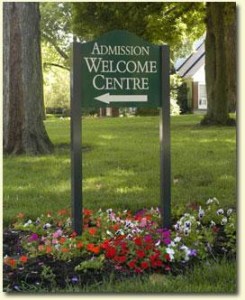20 October 2009 archive
Editor’s Note 0
Chronicle of Higher Education Journalist, Eric Hoover, writes about something we have been sharing with our students for several years now. Â Mr. Hoover hits on all the important points very well.
Regardless of where your student applies the bottom line cost of college is of great importance, particularly in an uncertain economy. The increased number of applicants to state supported schools make even those “safeties” an uncertain option from an admissions perspective.
But there are still very good private colleges that offer non-need Merit Scholarships that are often not considered by bright, ambitious students. Too often they have constructed their college lists from the top down with “brand-name†colleges.
Though it is true that Harvard and Princeton have extraordinarly generous aid policies, a parent’s AGI needs to be less than $180,000 to qualify for significant need-based grants with one child in college. As we all know, however, the challenge is to be admitted in the first place.
In any case, our money saving Dry Run can give you an early look at the myriad of possibilities still available for both the student and parents.
College Admissions Uncertainty 0
The State of College Admissions: Full of Uncertainty
By Eric Hoover
As the numbers of college applicants and applications have gone up, many colleges have seen other things go down, including their acceptance rates, their “yield” rates, and their confidence in predicting enrollment outcomes.
A new report from the National Association for College Admission Counseling puts that trend in context. For the fourth straight year, about three-quarters of four-year colleges and universities saw an increase in applications over the previous year, says the report, which examined the admissions cycle for freshmen who enrolled in the fall of 2008. Twenty-two percent of those applicants had submitted seven or more applications, up from 19 percent in 2007.Â
 In an analysis of data from the U.S. Department of Education, the report’s authors also found that from 2001 to 2007, the average acceptance rate at four-year institutions fell to 66.8 percent, from 71.3 percent. During that time, the average yield rate—the percentage of admitted students who enroll—declined to 45.2 percent, from 49.1 percent. Read more »
